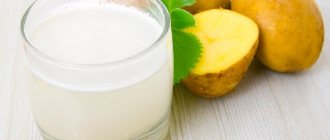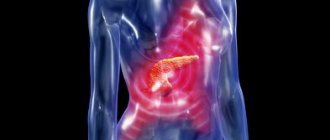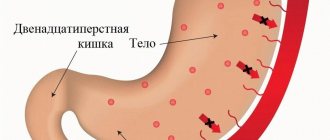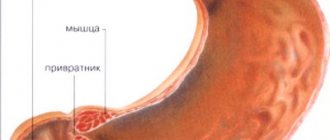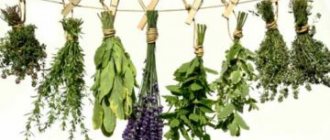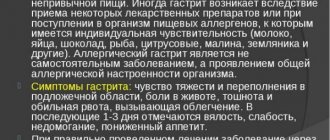Features of the disease
Erosive gastritis is characterized by the presence of numerous defects on the reddened and inflamed gastric mucosa, which sometimes cover the entire surface of the organ. Most often, the treatment of the disease is longer and more complex than that of ordinary gastritis. The disease is dangerous due to gastric bleeding of varying degrees of intensity. Gastritis can occur in both acute and chronic forms.
Acute erosive gastritis can be triggered by the entry of aggressive substances into the stomach:
- bad food;
- medications;
- acids and alkalis;
- chemicals.
Upon contact with an unfavorable environment, burns appear on the mucous membrane, which become inflamed during healing. Also, acute gastritis can be caused by sepsis, liver or kidney failure. Chronic erosive gastritis can be caused by the following reasons :
- eating disorders;
- Crohn's disease;
- Helicobacter pylori infection;
- internal failures in secretory processes.
Clinical signs
Based on patient complaints, it is almost impossible to accurately diagnose erosive gastritis: the symptoms of the disease largely coincide with the clinical signs of ordinary gastritis. The exception is gastric bleeding and the pronounced and persistent nature of other symptoms.
Symptoms of erosive gastritis may depend on concomitant pathologies and characteristics of the course of the disease:
- Pain of varying intensity, concentrated in the upper abdomen.
- Dyspeptic disorders (heaviness in the stomach, upset stool, bitterness and dry mouth, rotten or sour belching).
- Pain that appears or worsens on an empty stomach or after eating.
- Heartburn. Most often accompanies chronic erosive gastritis, when gastric motility is impaired. Usually indicates a disease with high acidity.
To select a treatment regimen, the symptoms of erosive gastritis must be confirmed through clinical studies. It is necessary to conduct gastroscopy, analysis of tissues affected by erosion, and others.
Types of erosive gastritis
The most dangerous complication that occurs as a result of a long course of erosive gastritis is gastric bleeding, they are called hemorrhagic gastritis.
Superficial erosions on the mucous membrane of the fundus of the stomach, the posterior and anterior walls of the organ rarely bleed. Deep and extensive damage to the mucosa, especially those located in areas where large vessels are concentrated, pose a greater threat. The disease is accompanied by increased acidity.
Hemorrhagic gastritis is detected when the depth of mucosal defects reaches the level of blood vessels. The risk of a disease transitioning from a chronic or acute stage to a hemorrhagic stage depends not only on the characteristics of the body, but also on many other factors. The possibility of developing the disease increases:
- arterial hypertension;
- problems with blood clotting;
- taking drugs with an anticoagulant effect (Aspirin and its analogues, Heparin, Warfarin);
- the use of certain medications with an anti-inflammatory effect (Ibuprofen, Diclofenac);
- use of non-steroidal analgesics.
Unlike erosive gastritis, hemorrhagic gastritis has pronounced symptoms:
- Reducing pain. The more erosions bleed, the more sensitive receptors are destroyed, which means the pain is felt less and less.
- Signs of anemia. Decreased blood pressure, dizziness, increased heart rate, pallor and weakness. The intensity of symptoms depends on the amount of blood lost.
- Vomiting brown or bloody contents.
- Dark color of stool.
The disease, usually affecting the lower third of the stomach, is called superficial erosive antral gastritis (antrum). The cause of its development is most often Helicobacter. Superficial gastritis is accompanied by severe pain. Treatment of this stomach disease requires a long time and a lot of effort, but if left untreated, it can lead to serious complications.
Chronic superficial erosive antral gastritis occurs against the background of:
- late overeating;
- abuse of alcohol, coffee or tea;
- regular intake of spicy, coarse, salty or spicy foods;
- infectious or acute gastroenteritis;
- Diet disorders after food poisoning.
Erosive reflux gastritis is characterized by the appearance of large ulcers and extensive lesions. Tissues begin to peel off, and fragments of them often come out with vomit. As the disease progresses, the esophagus canal may narrow.
Treatment of erosive gastritis with folk remedies - the most effective methods
There is no clear opinion among adherents of unconventional methods of treatment which method is the most effective and “works” better than others on healing erosions. After all, all people are different, one method is suitable for some, but others develop intolerance to it.
The following methods in the fight against this type of gastritis have gained popularity in folk therapy:
Each method has contraindications. The use of honey or propolis for allergic reactions is unacceptable; herbs, due to the diverse composition of biologically active substances and essential oils, can also cause individual intolerance. Not every stomach can take sea buckthorn oil, and sometimes it can cause increased nausea.
You should not think that the methods “from the people” are safe, since they do not contain chemicals; natural medicines, just like synthetic ones, can help or harm the body. Therefore, before starting treatment, you should definitely consult a specialist.
Treatment with propolis
Propolis is a waste product of bees. It is rich in phenolic compounds, vitamins, amino acids, essential oils, and microelements.
Beekeepers claim that “propolis cures everything!” Doctors consider this a controversial statement, but agree that this substance actually has a healing effect on the gastric mucosa.
Bee glue has the following therapeutic effects:
- Antiseptic
- Anti-inflammatory
- Bactericidal
- Reparative
- Painkiller
- Antiviral
It is recommended to use an aqueous infusion of propolis, 1 tablespoon 3 times a day for a month. Preparation is carried out as follows: grind 50 g of fresh product, add 450 ml of water, boil for 2 hours.
Cool, pass through a double layer of gauze into an orange glass container. Store protected from light for no more than a week, shake before use.
Traditional healers also recommend taking an alcoholic infusion of propolis, but doctors advise refraining from this method in case of erosive processes.
Alcohol has an extremely negative effect on the inner wall of the stomach, it burns it and slows down recovery. And using an alcohol tincture on an empty stomach can even provoke bleeding and the formation of an ulcer.
Taking propolis tincture (purchased at a pharmacy or made independently with 70 percent alcohol), diluted in milk: 20 drops per glass. You can take the product before meals 3 times a day. The course of therapy lasts 28 days.
Diet
Diet for erosive gastritis is a prerequisite for effective treatment. Dietary restrictions are also necessary to prevent this stomach disease. In case of exacerbation of the disease, diet No. 1 is recommended . In the chronic form, it is possible to switch to the menu according to diet No. 5.
What should be the diet for erosive gastritis? Gastroenterologists give some advice:
- Avoid foods that irritate the mucous membranes and increase the production of gastric secretions.
- Eat boiled or steamed foods.
- The menu should be dominated by warm dishes with a liquid or mushy consistency.
- It is important to coordinate nutrition with the acidity of gastric juice. If it’s high, don’t eat sour foods; if it’s low, vice versa.
A diet for erosive gastritis involves avoiding the following foods:
- rich pastries and fresh bread;
- fried and fatty foods;
- spices;
- smoked meats;
- chocolate, candy, cookies.
The menu of a patient with gastritis can include:
- dietary meat (rabbit, young beef, chicken);
- black and stale white bread;
- porridge, except barley and wheat;
- mashed potatoes;
- butter;
- a little vegetable oil;
- dairy products;
- fish.
Hemorrhagic gastritis is accompanied by blood loss, so when diagnosing it, it is necessary to add foods high in iron to the menu: liver, beef, sweet baked apples.
To effectively treat superficial antral gastritis, you need to review the menu and diet. After making an accurate diagnosis, the body is cleansed. For one or two days you only need to drink mineral water and weak black tea. In the following days, the menu should consist of boiled and pureed dishes; you need to eat often and in small portions.
Diet for reflux esophagitis and gastritis is a prerequisite for effective treatment. At the first stage, you need to let your stomach recover and rest. You will have to sit on mineral water and unsweetened tea for one or two days. The menu should include dishes with a liquid or semi-liquid consistency: boiled ground meat and vegetables, slimy soups and porridges.
How to cook oats for gastritis
Everyone can cook oatmeal from flakes. This dish can be included in the diet of a patient with gastritis even during an exacerbation. In this case, the porridge is boiled in water and a small piece of butter is added.
After the acute symptoms subside, you can cook the porridge in milk diluted in half with water. But it is necessary to treat gastritis with oat infusion or decoction. Let's figure out how to brew this cereal to get a healing drink.
Decoction
Oat decoction for gastritis is the main medicine used to treat gastritis. This preparation retains the maximum amount of beneficial substances. Here is a recipe for making a decoction. It is necessary to prepare decoctions not from flakes, but from whole oat grains. Procedure:
- we wash the grains and let them dry;
- grind the grains into flour using a blender or coffee grinder;
- Stir half a glass of the resulting flour in half a liter of water;
- put the mixture on the stove, bring to a boil;
- reduce heat to low and cook for 30 minutes;
- let the broth cool under the lid;
- filter.
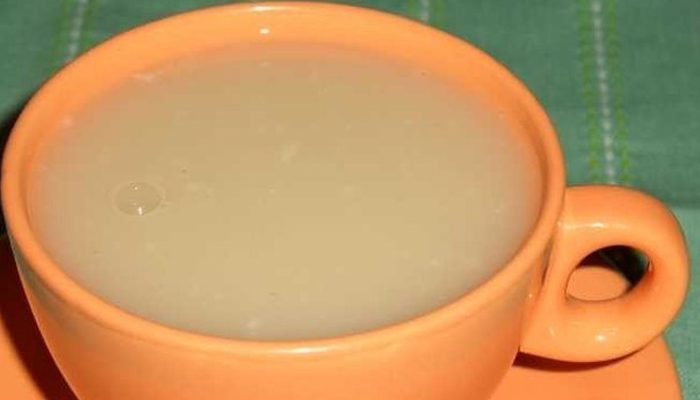
The finished broth is slimy, similar to jelly. It needs to be diluted with cold boiled water to half a liter. The resulting liquid is divided into three doses and drunk per day. You need to drink the decoction before meals, the course of administration is six months.
Infusion
The oat infusion should be prepared from whole grains; there is no need to grind them. For a glass of boiling water you need to take 0.25 cups of grains. Since the infusion takes a long time to prepare, you can immediately prepare 1 liter of infusion for two days of use. Procedure:
- Wash and dry 1 cup of grains;
- pour a liter of boiling water and let it brew for 12 hours;
- boil water in a large saucepan, place the container with the infusion in the boiling water and simmer in a water bath for half an hour;
- cool the infusion and let it brew for half a day;
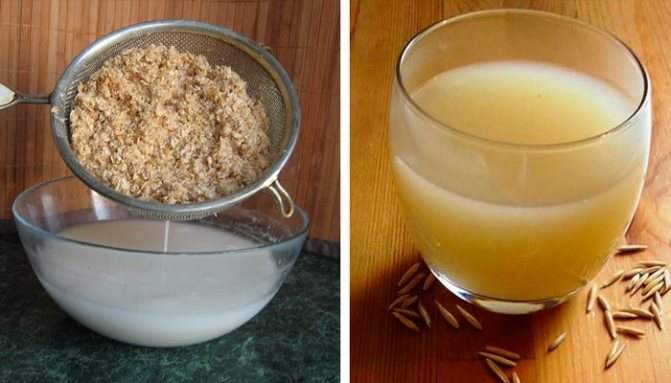
- drain the liquid through a sieve;
- add water to a volume of 1 liter;
- Divide the prepared infusion into 6 servings and drink within two days. The infusion should be stored in the refrigerator.
Advice! Under no circumstances should you drink an infusion that you have just taken out of the refrigerator. You need to heat the prepared portion to a temperature of 36-37 degrees.
Kissel
Oatmeal jelly also has healing properties. It is prepared like this:
- The grains are washed, dried and poured with boiling water. For 500 gr. cereals you need to take three liters of water;
- leave the mixture to infuse for 12 hours;
- drain the liquid through a sieve;
- the swollen oats are washed with the drained infusion, actively stirring and pressing with a spoon to remove as much healing mucus as possible;
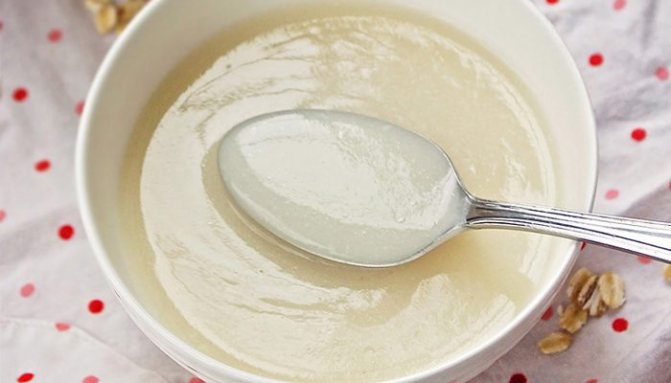
- Place the liquid on the fire and cook over low heat until thickened. The jelly should not be allowed to boil, so it is best to cook it in a water bath;
- You need to take the drink half a glass three times a day.
Treatment methods
Since bulbitis is a rather dangerous disease, treatment of erosive gastritis with folk remedies should be carried out after consultation with a doctor. The treatment regimen used by official medicine is aimed at solving the following problems:
- Decreased production of gastric juice due to increased secretion.
- Facilitating the digestion process. Enzyme preparations are used.
- Combating high acidity of gastric juice.
- Stop bleeding. Hemorrhagic gastritis requires intravenous or intramuscular administration of hemostatic drugs.
- Elimination of pathologies of gastric and duodenal motility.
- Taking antibiotics for a bacterial cause of the disease, if it is necessary to treat helicobacteriosis.
- Balneotherapy. It is better to take mineral waters for treatment not at home, but in a sanatorium or hospital.
Folk remedies, when properly selected, help solve some of these problems, which generally helps to cure this stomach disease and prevent its aggravation.
Calendula infusion
Taking calendula infusion at home is effective. The plant has the following effects:
- fights high acidity;
- relieves inflammation;
- eliminates bacteria;
- reduces pain.
Calendula infusion is prepared and taken as follows:
- Pour a tablespoon of flowers into a glass of boiling water.
- Cover with a lid and let sit for an hour.
- Drink the strained product 3 times a day, one tablespoon at a time.
Hemorrhagic gastritis is recommended to be treated with folk remedies only at the remission stage.
Vegetable juices
Herbalists believe that vegetable juices are the most effective folk remedies for this stomach disease.
Beet juice
Scheme for preparing and receiving beet juice:
- Wash and peel the beets.
- Pass the root vegetable through a meat grinder.
- Squeeze the pulp and collect the juice.
- Leave the juice for 2 hours.
- Dilute it with water in equal proportions.
- Every 2 hours, drink half a glass of beetroot drink.
Cabbage juice
When treating erosive gastritis at home, taking cabbage juice is effective. For bulbitis with high acidity, cabbage juice is not recommended. You need to take the juice according to this scheme:
- First week: dilute a glass of fresh juice with a glass of water, drink 100 ml of the mixture before meals.
- Second week: mix two glasses of juice with two glasses of water, drink 200 ml each.
- Third week: you need to mix three glasses of juice and water, drink before meals and an hour after it.
- Fourth week: drink 4 glasses of juice a day, prepared in the same way.
carrot juice
If the disease is accompanied by high acidity, you can treat it at home with carrot juice. 40 minutes before meals you need to drink a glass of freshly squeezed juice. It is recommended to drink up to a liter of drink per day.
Is it possible to eat oats for gastritis?
Oats are often used in the treatment of gastritis because this cereal:
- includes a large number of useful substances (vitamins, amino acids, minerals) that are necessary for the digestion process;
- vegetable oat proteins help restore and strengthen the mucous membranes lining the digestive organs from the inside;
- the product removes toxins and excess fluid well;
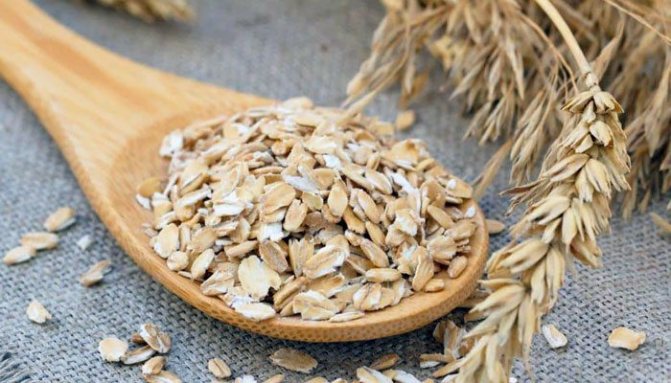
- helps eliminate constipation;
- helps strengthen the body's defenses, which is very important in the treatment of infectious and stress gastritis;
- normalizes the pH level of gastric juice, which is very important for gastritis with high acidity. The use of oats allows you to avoid the transition of gastritis to a more severe stage - peptic ulcer.
